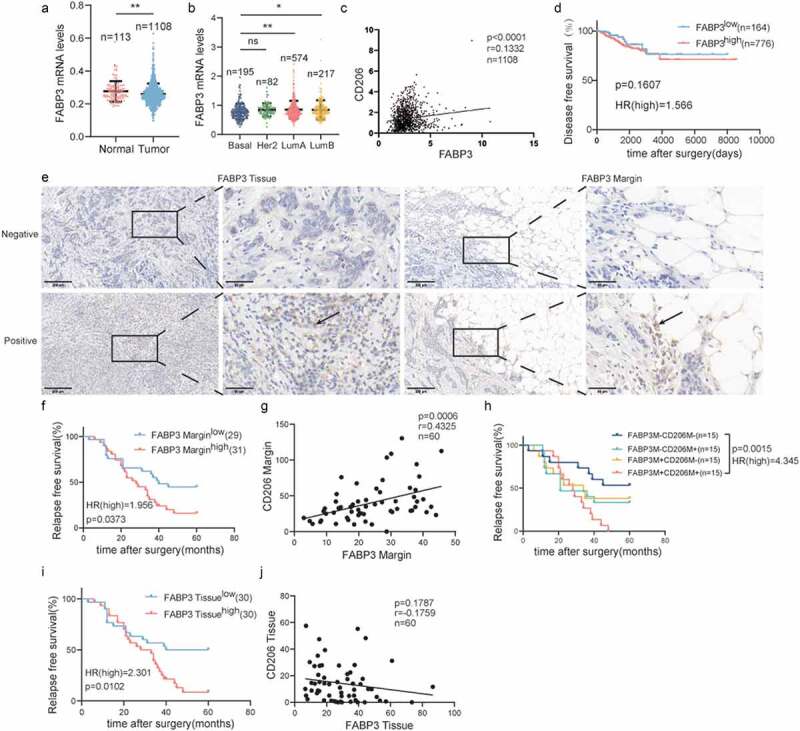Figure 2.

Expression of FABP3 in the TAME is tightly linked to the polarization of CD206+macrophage and predicts survival in breast cancer.
(a) Comparison of FABP3 mRNA expression in normal and tumor breast tissues in the TCGA datasets. (b) FABP3 mRNA expression in different breast cancer subtypes in the breast cancer cohort of TCGA. (c) Correlation analyses between the protein expression levels of FABP3 and CD206 in the TCGA datasets. (d) Kaplan-Meier plots of human BRCA specimens from the TCGA datasets (1082 patients) based on low vs. high gene expression of FABP3. (e) Representative immunohistochemical images of FABP3 in tumor invasive margins and tumor tissues, respectively. (f, i) Kaplan-Meier survival analysis of patients with FABP3-positive and -negative IHC staining in the margin or tumor tissues, respectively. (g, j) Correlation analyses between the protein expression levels of FABP3 and CD206 in the margin or tumor tissues, respectively. (h) Kaplan-Meier survival analysis of patients with biomarker-positive and -negative IHC staining in the margin.*, p < .05; **, p < .01; ***, p < .001; ****, p < .0001; ns, not significant; Correlation calculations represent Pearson’s coefficient.
